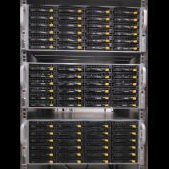Leaderboard
Popular Content
Showing content with the highest reputation on 05/27/19 in all areas
-
Summary: Support Thread for ich777 Gameserver Dockers (CounterStrike: Source & ConterStrike: GO, TeamFortress 2, ArmA III,... - complete list in the second post) Application: SteamCMD DockerHub: https://hub.docker.com/r/ich777/steamcmd All dockers are easy to set up and are highly customizable, all dockers are tested with the standard configuration (port forwarding,...) if the are reachable and show up in the server list form the "outside". The default password for the gameservers if enabled is: Docker It there is a admin password the default password is: adminDocker Please read the discription of each docker and the variables that you install (some dockers need special variables to run). The Steam Username and Password is only needed in templates where the two fields are marked as requirde with the red * Created a Steam Group: https://steamcommunity.com/groups/dockersforunraid If you like my work, please consider making a donation1 point
-
Go back and check your resolution in OVMF. Make sure it matches your clover resolution.1 point
-
You could use the Unassigned.Devices Plugin and use your drives connected but not in the protected array and slowly move the data to your array in the form they currently are in NTFS/FAT32 or whatever and still be able to access the data from the server from your Dockers, VM's or whatever else you need to do. Its a pretty good catch all Plugin for those of use that want to access our Data without having to have our drives in the array.1 point
-
@CHBMB I too see this high power consumption. I know why it's happening, too. Basically, the nvidia driver doesn't initialize power management until an Xorg server is running. The only way to force a power profile on Linux currently is to use nvidia-smi like so: nvidia-settings --ctrl-display :0 -a "[gpu:0]/GPUPowerMizerMode=2" Which requires a running Xorg display. I've been trying to dig around in sysfs to see if there is another place that this value is stored, but there doesn't seem to be. It looks like the cards are locked into performance mode... Perhaps this is worth bringing up to nvidia? In the meantime, I'm going to continue digging to see if I can find a way (perhaps an nvidia-settings docker?) to force the power state.1 point
-
Got it, thx, web player debug settings, disable direct play, and now I see HW transcoding working. Yeah, thank you LSIO and Nvidia plugin team!1 point
-
You can mix SATA ports on the motherboard and HBA without restriction. When using SSDs it is recommended to connect these to the M/B, because most HBAs do not support trim A faster parity disk gives a bit of performance benefit though difference isn't much. When using two parity disks the rule is that each parity is as big or bigger than the biggest data disk, parity disks don't need to have the same size but in general it is easier to use the same size when upgrading the array. A second parity disk is used to overcome double disks failure, which is more likely to happen when the array has more disks, but it is up to the user to decide whether a second parity is present or not. There are users happily running a large array with single parity.1 point
-
I don't know about you, but my wife does this all the time (usually in anger) and expects me to remember everything...1 point
-
9@BLKMGK I have not had a chance to test yet but I can tell you how I initially a2 my tests that were easy. Don't do a multi node swarm. Just turn the unraid into a single node swarm of itself. That means you don't need to worry about networking between boxes etc. When I did that then created multi containers with just a basic test webpage on them on a docker network I could I could not talk between them of I docker exec into them or from my host to them for memory. Sadly I just have my main unraid server and no spare but I may still try the kernel on it in a day or 2 when I get some time. Also just for reference I want swarm for Openfaas.1 point
-
From Redhat description: In general, VM's in general, and PCI-Passthrough to VM's in particular, are highly hardware dependent. If h/w is modern and chosen correctly, this works great, but if bios not up to date, or h/w old or misconfigured, you may end up with far less hair than you started with getting it to work.1 point
-
@AntaresUK The 2 best choices are still VirtIO and SCSI and is adviced by the Unraid team. Both have the least amount of overhead but for both you need the drivers during the OS install. Windows doesn't have any drivers for these devices out of the box. The advantage of SCSI is you can pass through trim operations from within the guest to the host. This isn't possible with SATA or IDE devices. Windows in this case is aware of an underlying SSD an optimizes the disk like a normal SSD. For older operating systems and some linux distros only SATA devices are recognised.1 point
-
1 point
-
I ran it between my two unRAID servers and got the following results: 940+ Mbits/sec is not too bad on a gigabit LAN. You'll have to install iperf for Windows (https://iperf.fr/iperf-download.php) to test throughput between Windows client and unRAID server, but, the syntax is the same and you can run it from the cmd prompt. I invoked iperf in server mode on one unRAID machine with the following: iperf3 -s On the other server I ran it in client mode with the following: iperf3 -c (IP address to the "server") -t 10 -P 10 -t says run a 10 second test and -P starts 10 worker threads to max out the connection.1 point
-
This depends on your Router. WOL-Pakets using port 9 and are designed for LAN usage only and will not be routed. If this packet comes over port 9 to the WAN-Port, the router will drop it. BUT... If your Router can handle this, you can also WOL over the inet. This is called WOW - Wake On WAN. Its a little bit complicated to explain this procedure because it depends on your router, how to set it up. Short discription: You must send a "broadcast" (important!) from inet to your router over a various port (say, port 50000) - DONT USE port 9! Then the router must take this packet coming from port 50000 and send it now over port 9 to the proper ip address in your LAN. Therefor i use a firewall-rule at my IPFire-router which sends the paket coming from port 50000 to my unraid-ip port 9. Again: The Router "must be able" to forward a paket from one port to an other (in this case from port 50000 to port 9). The problem: 1) Not all routers will do this 2) The config for this "game" is not defined as a "standart" so it depends on your router model, how it will go - or not. Example from the tool "wolcmd" for Windows, written in a bat-file, which sends the packet to the router: wolcmd FFFFFFFFFFFF xxx.xxx.xxx.xxx 255.255.255.255 50000 The 12 "F" are the MAC-address of your unraid-server, the "X" are your WAN IP (or the WAN-IP of your router), then comes the broadcast address (4x 255) and then the port. This *.bat file must be stored on the (Windows)client, which shall wake up unraid from the inet. You can also use Android for this, if you like. I use the App "Wake on Lan Wan" https://play.google.com/store/apps/details?id=com.benfinnigan.wol1 point
-
Ah, thanks. I will issue a feature request. The button labeled "Move now" could offer "Pause" or "Stop now" if the mover is running. Regards Harald1 point







